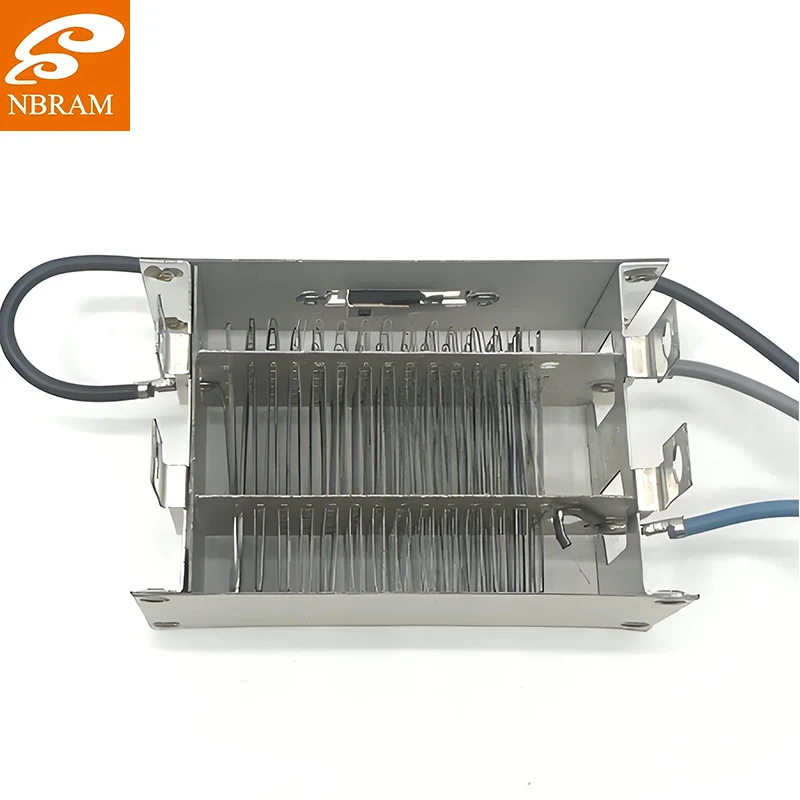You know that moment when you sit down on a cold toilet seat first thing in the morning? That's exactly the discomfort we've eliminated with NBRAM's intelligent toilet heating element. Having worked with luxury hotel chains across Asia, I've seen firsthand how a reliably warm seat can make or break the guest experience. Our PTC technology doesn't just heat - it intelligently adapts to room conditions while maintaining strict safety standards that give peace of mind in moisture-rich bathroom environments. When you're sourcing heating solutions that won't have customers complaining about inconsistent warmth or premature failures, our intelligent toilet components deliver the perfect blend of comfort and reliability that stands up to daily use in both residential and commercial settings.
I'll never forget the first time I tested our prototype intelligent toilet heating element in actual bathroom conditions. The engineering team thought I was crazy for running 24/7 tests simulating years of use, but that's how we discovered the condensation issues that plague most heating elements. That hands-on testing completely changed our approach - we realized we weren't just building heating components; we were creating products that affect people's daily comfort and well-being.
This personal connection to real-world performance drives everything from our material selection to our quality control processes. It's why we treat every element as if it were going into our own homes, and why manufacturers who've been burned by unreliable suppliers keep coming back to us season after season.
Walking through our manufacturing facility always reminds me of visiting a Swiss watchmaker - the precision is that remarkable. Each intelligent toilet heating element starts with PTC ceramic material that's formulated to handle bathroom humidity without missing a beat. I recall working with a hot spring resort in Japan where previous elements failed within months due to condensation, but ours are still going strong after three years of continuous use.
The real magic happens during the encapsulation process. We vacuum-seal each element with a special moisture-resistant epoxy that's been torture-tested in 95% humidity chambers for what feels like eternity. The electrical connections get gold plating - not for looks, but because I've seen how bathroom moisture can turn ordinary connections into green, corroded messes. Every single unit undergoes dielectric testing at 1500V AC because when it comes to bathroom safety, there's no room for compromise.
Here's where our heating elements really prove their worth - they're not just about comfort, they're about transforming the entire bathroom experience. The gradual warm-up feature prevents that unpleasant shock of going from cold to hot too quickly, something I've personally come to appreciate during those early winter mornings.
We've supplied these elements to hospitals where patients with limited mobility need consistent warmth, and to high-end hotels where guest satisfaction hinges on every detail being perfect. One hotel chain reported a 40% reduction in maintenance calls after switching to our components. The energy-efficient design means these elements can stay on around the clock without driving up electricity bills, providing that always-ready comfort users expect from premium intelligent toilets.
Let's talk numbers that actually matter when you're designing toilets people will trust day in and day out. Our elements operate at safe low voltages from 12V to 24V DC - because nobody wants high voltage anywhere near water. Power consumption ranges from 15W to 40W, carefully balanced to provide cozy warmth without making users worry about energy costs.
Surface temperature stays consistently between 30°C to 40°C with ±1°C accuracy - that's the difference between comfortable warmth and unpleasant heat. The PTC technology ensures temperature stability regardless of whether it's a chilly winter morning or a humid summer evening. Response time clocks in under 60 seconds because when nature calls, nobody wants to wait. Insulation resistance exceeds 100MΩ at 500V DC, and dielectric strength handles 1500V AC for a full minute - specs that go above and beyond typical bathroom appliance standards.
